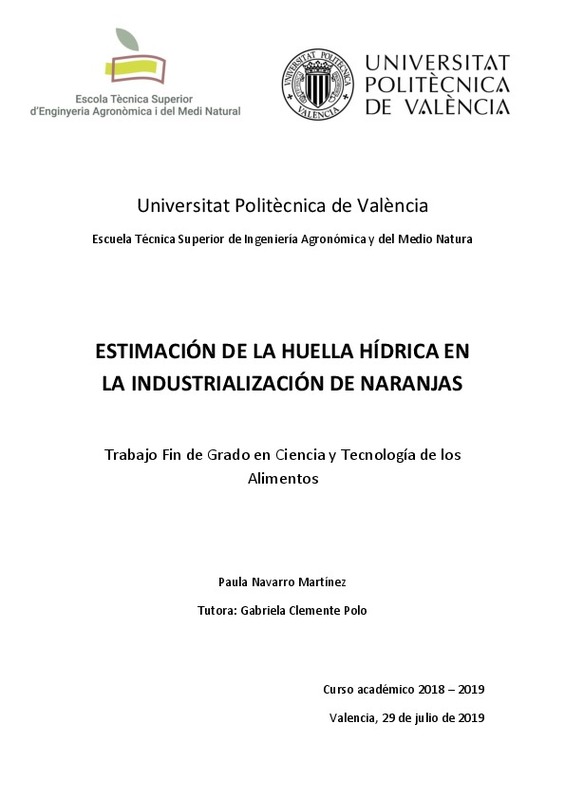JavaScript is disabled for your browser. Some features of this site may not work without it.
Buscar en RiuNet
Listar
Mi cuenta
Estadísticas
Ayuda RiuNet
Admin. UPV
Impacto del uso del agua en la producción de zumo de naranja
Mostrar el registro completo del ítem
Navarro Martínez, P. (2019). Impacto del uso del agua en la producción de zumo de naranja. Universitat Politècnica de València. http://hdl.handle.net/10251/178777
Por favor, use este identificador para citar o enlazar este ítem: http://hdl.handle.net/10251/178777
Ficheros en el ítem
Metadatos del ítem
| Título: | Impacto del uso del agua en la producción de zumo de naranja | |||
| Autor: | Navarro Martínez, Paula | |||
| Director(es): | ||||
| Entidad UPV: |
|
|||
| Fecha acto/lectura: |
|
|||
| Resumen: |
[ES] El presente trabajo se basa en la evaluación de la huella hídrica en la industrialización de la naranja en la Comunidad Valenciana.
En primer lugar se lleva a cabo una descripción del sistema, esto implica definir ...[+]
[EN] This final work is based in the water footprint evaluation for orange industrialization in Comunidad Valenciana.
First of all, a system description is carried out; this implies its limits definition and the compilation ...[+]
|
|||
| Palabras clave: |
|
|||
| Derechos de uso: | Reserva de todos los derechos | |||
| Editorial: |
|
|||
| Titulación: |
|
|||
| Tipo: |
|
Localización
recommendations
Este ítem aparece en la(s) siguiente(s) colección(ones)
-
ETSIAMN - Trabajos académicos [3541]
Escuela Técnica Superior de Ingeniería Agronómica y del Medio Natural







